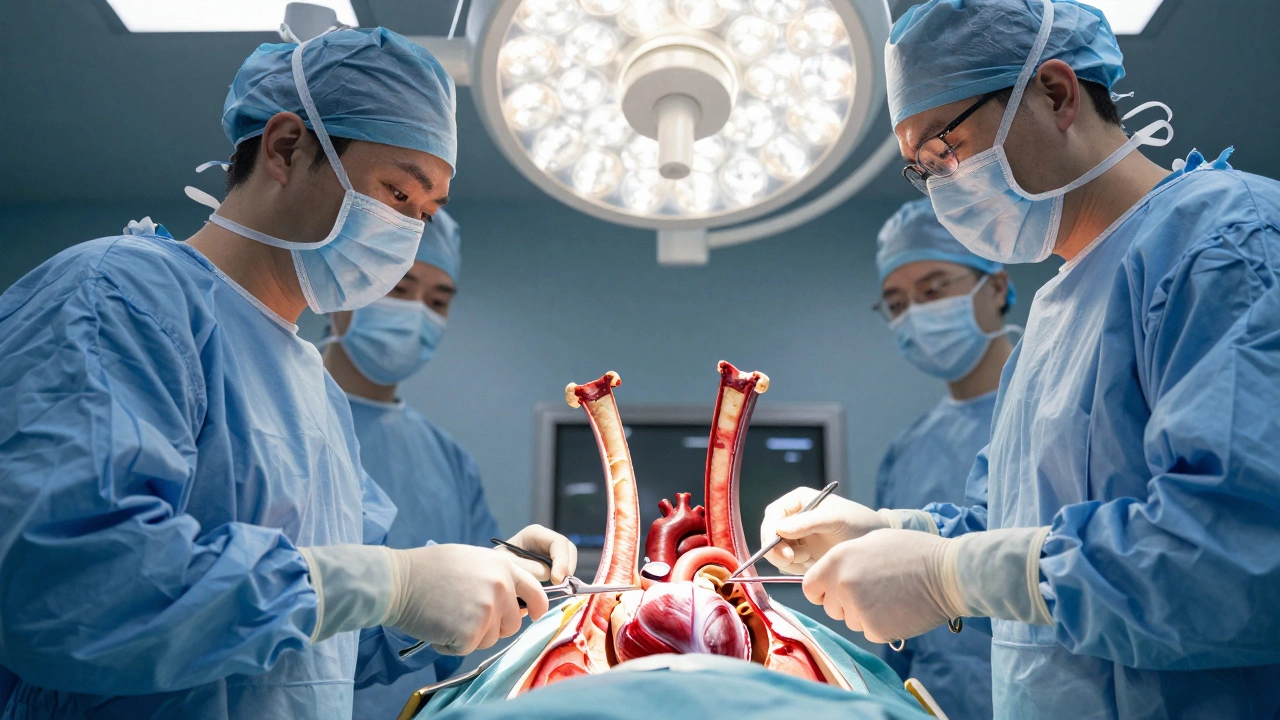Heart Surgery Recovery: What You Need to Know Right After the Operation
Just got through heart surgery? You’re probably feeling a mix of relief, fatigue, and maybe a little anxiety. That’s normal. The first few weeks set the tone for the rest of your healing, so let’s break down what to expect and how to make it smoother.
First 72 Hours – Hospital Stay Basics
When you wake up in the recovery room, nurses will check your breathing, heart rhythm, and incision site every hour. Keep the breathing tube out of the way by taking slow, deep breaths – it helps avoid pneumonia. Your pain meds will be adjusted throughout the day; don’t wait for the pain to get bad before asking for a dose.
Watch the drainage tubes. They’re there to prevent fluid buildup. If the bags fill quickly or the fluid looks cloudy, tell the staff. Most patients start walking the day after surgery, even if it’s just to the bathroom. Those short walks kick‑start circulation and lower clot risk.
Home Sweet Home – The First Two Weeks
Once you’re home, the biggest goal is to keep moving without overdoing it. Aim for short, frequent walks – five minutes every few hours is better than one long stroll. Keep your incision clean and dry; a gentle shower is fine after 48‑72 hours, but avoid soaking the area until the doctor says it’s safe.
Medication is a big part of recovery. Take all prescribed drugs exactly as directed – especially blood thinners and any cholesterol or blood‑pressure meds. Set alarms if you’re prone to forgetting doses.
Nutrition matters too. Focus on heart‑healthy foods: leafy greens, whole grains, lean protein, and plenty of water. Salt can cause swelling, so try to keep it low. If you’re unsure about portion sizes, ask your dietitian for a simple plate guide.
Warning Signs – When to Call the Doctor
Most aches are normal, but some symptoms need immediate attention. Call your surgeon or go to the ER if you notice any of these:
- Chest pain that’s sharp, heavy, or radiates to the arm or jaw.
- Sudden shortness of breath or wheezing.
- Rapid heartbeat over 100 beats per minute at rest.
- Fever above 100.4°F (38°C) that lasts more than 24 hours.
- Redness, swelling, or drainage that looks pus‑filled around the incision.
These signs could mean infection, bleeding, or a heart rhythm issue – better to be safe and get checked.
Rehab and Long‑Term Care
After the initial two weeks, most surgeons schedule a cardiac rehab program. It’s not just exercise; it includes education on lifestyle changes, stress management, and monitoring your heart health. Attend all sessions – they’re tailored to your ability and can dramatically lower the chance of future problems.
Sleep helps your heart heal. Aim for 7‑8 hours a night, keep the bedroom cool, and avoid caffeine after 2 pm. If you struggle with insomnia, talk to your doctor about safe sleep aids.
Getting Back to Normal – Realistic Timelines
Everyone’s journey is different, but here’s a rough timeline:
- Week 1‑2: Light walking, basic self‑care, medication adjustments.
- Month 1‑3: Gradual increase in activity, start low‑impact cardio, join rehab.
- Month 3‑6: Return to most daily tasks, possibly light sports, regular check‑ups.
- 6 months and beyond: Full return to normal life if you’ve followed the plan and kept heart‑healthy habits.
Patience is key. Pushing too hard too soon can set you back, but staying idle can slow progress. Listen to your body, keep the lines of communication open with your care team, and celebrate each small milestone.
Heart surgery recovery doesn’t have to be a mystery. By staying active, managing pain, watching for warning signs, and sticking to a heart‑smart lifestyle, you’ll give yourself the best chance for a smooth, strong comeback.








